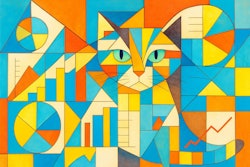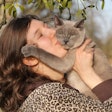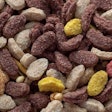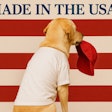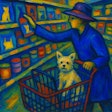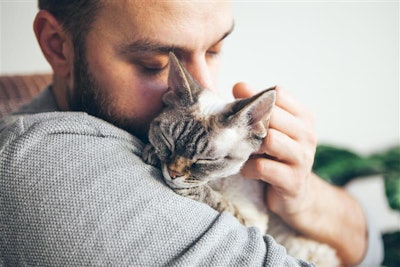
The American Pet Products Association's (APPA) newly released Dog & Cat Report 2025, which takes strategic insights from its national pet owners' survey, unveiled four trends that are reshaping the pet food industry. Based on data collected in the fourth quarter of 2024, the report highlighted how evolving consumer behaviors and generational shifts are driving demand for premium nutrition, functional supplements and wellness-focused products, even as economic pressures continue to challenge household budgets.
“Our latest Dog & Cat Report confirms what many in the industry have sensed -- pet ownership continues to evolve in meaningful ways, with dogs and cats more integrated into our lives than ever before,” said APPA president and CEO Peter Scott. “From prioritizing pet nutrition to the rise of multi-cat households, today’s pet owners are redefining what it means to care for a companion animal. These insights reflect not only the powerful bond between humans and their pets, but a roadmap for where the pet industry is headed next.”
1. Rise of the "Cat Dad:" Cat ownership grows 23%
In a media event on June 23 announcing the study's results, Ingrid Chu, vice president of Research and Insights at APPA, noted the first key trend in APPA's latest survey was the increase in cat ownership, which jumped 23% in 2024 to reach 49 million households — an all-time high since 2010. This growth is changing industry dynamics and challenging long-held assumptions about feline consumers, said Chu.
The driving force behind this trend: Gen Z and Millennial men are adopting cats at unprecedented rates, dismantling outdated stereotypes and ushering in the era of the "Cat Dad." These younger male pet parents are redefining cat ownership, moving away from the traditional independent companion model toward active, engaged relationships with their feline friends.
"Single cat households are actually on the decline because multi-cat households are up, especially three or more cats," said Chu. This shift toward multiple cat ownership represents an opportunity for pet food manufacturers to capture larger household spending per customer.
The evolving human-feline bond is evident in behavioral changes that directly impact product demand. Nearly half (48%) of cat owners now train their cats — a 41% increase over the past six years. Sales of harnesses, leashes and collars have steadily climbed since 2018, indicating cats are increasingly integrated into active lifestyles previously reserved for dogs.
Perhaps most telling is the celebration culture emerging around cats: hosting birthday parties for cats has increased 250% since 2018, while purchases of cat-themed merchandise have risen nearly 90% over the same period. As Chu said, "This is showcasing the evolution of the relationship with the cat and their owner, moving beyond the outdated perception of cats as independent companions."
2. For dogs, shared experiences drive deeper connections
Dog ownership trends reveal an equally significant shift toward integration and shared experiences, noted APPA. Dog owners are increasingly prioritizing activities that deepen their connection with their canine companions, incorporating pets into virtually every aspect of daily life.
The data shows 59% of dog owners now take their dogs on foot for daily errands at least once per week — a 6% increase from 2023. This trend toward active, shared routines supports both human and pet wellness while creating opportunities for portable nutrition products and on-the-go feeding solutions.
Workplace integration represents another frontier, with nearly half (49%) of dog owners expressing willingness to bring their pets to work if offered pet-friendly policies. This trend aligns with employer recognition that pet-friendly workplaces can aid in recruiting and retaining talent while encouraging office returns in hybrid work environments.
Travel continues to be a major component of the dog-owner relationship, with nine out of 10 owners traveling by car with their dogs, and three-quarters taking at least one plane trip annually with their pets. "The frequency of travel is increasing, with more owners taking three or more trips per year as owners seek to integrate their dogs as much as they can into their life," said Chu.
3. Premium nutrition rebounds as wellness takes center stage
After experiencing a temporary dip due to economic pressures, Chu said premium pet food has rebounded strongly in 2024, while basic food purchases continue to decline.
The most dramatic growth appears in functional add-ons and mixers, which have exploded in popularity, she noted. Dog food mixers and toppers have increased 129% since 2018, while cat food equivalents have grown 138% over the same period. "That's just showing you that pet owners are really paying attention to what they can do to feed their pet more nutritiously," explained Chu. This trend indicates pet parents are actively seeking ways to enhance their pets' nutrition beyond traditional kibble or wet food options.
Functional diets featuring prebiotics and probiotics have also gained significant traction, growing 18% for dogs and 9% for cats in 2024 alone.
4. Proactive wellness drives supplement market expansion
The final trend APPA noted focused on vitamin and supplement usage continuing its upward trajectory. Vitamin and supplement use experienced 6% growth in 2024 compared to 2023, but the six-year growth story is even more compelling: 56% growth among dog owners and 70% among cat owners since 2018.
"There's actually some proactivity or preventative approach where more dog and cat owners are giving their pets vitamins and supplements," Chu said, reflecting owners' shift toward treating pets as integral family members.
For dogs, joint health supplements lead the category, followed by multivitamins and skin, coat and nail products. Cat owners show a different pattern, with multivitamins dominating supplement purchases, followed by prebiotics and digestive health products.
This proactive approach reflects pet owners' shift from reactive to preventative care, viewing their pets as integral family members deserving the same health optimization efforts they apply to themselves.
What it all means
These trends collectively point toward a pet food industry where emotional connection, health optimization and lifestyle integration drive purchasing decisions. For pet food manufacturers, the data suggests opportunities in premium formulations, functional ingredients and convenient packaging that supports active lifestyles.
“This year’s data paints a clear picture of shifting behaviors and priorities among pet owners, especially in the areas of wellness, lifestyle integration and premium product adoption,” said Chu. “We’ve seen double and even triple-digit increases in categories like cat harnesses, pet birthdays, themed merchandise, and nutrition-enhancing food toppers -- all evidence that consumers are embracing more personalized, intentional care for their pets.”
The rise of cat ownership, particularly among younger demographics, challenges traditional product development and marketing approaches. Multi-cat households and active cat ownership patterns suggest a need for products that support training, travel and celebration.
The emphasis on shared experiences and workplace integration for pet owners and their pets creates opportunities for grab-and-go products, travel-friendly packaging and educational content that supports the human-animal bond.
"At a time when inflation has kicked in and affordability is definitely an issue, premiumization is still maintaining," said Scott. "I think it's part of a broader trend where what's good for me is what's good for my pet. You're seeing that in supplements and in the expanding focus on longevity, both lifespan and health span. This plays into a broader societal shift toward wellness and really strengthens the human-animal bond as people spend more time with their pets and focus on getting healthier themselves."
The American Pet Products Association is a membership organization serving the pet industry through services and programs designed to help its members prosper. Since 1988, APPA has published the APPA National Pet Owners Survey, the premier resource of its kind, providing in-depth data on consumer behavior. APPA’s research and insights monitor consumer habits, identify short- and long-term trends and discover new opportunities in pet ownership, pet product and service consumption published across four quarterly reports, including State of the Industry, Dog & Cat, Fish & Reptiles and Horse, Birds & Small Animals.







